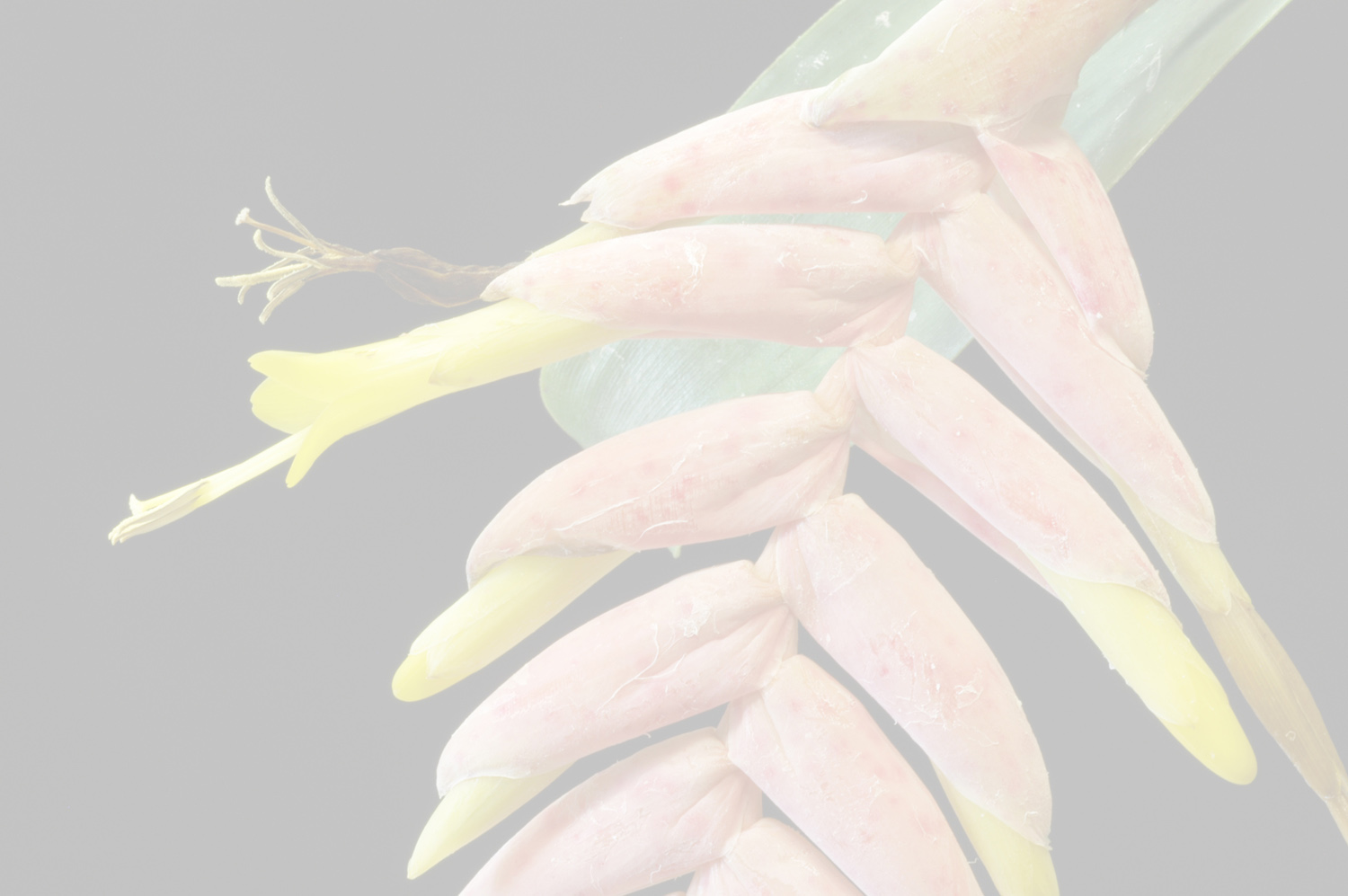


plant stemless, flowering 50–60 cm high, forming a funnel-shaped rosette, 30 cm high, 45 cm wide. leaves numerous, ca 30, to 50 cm long, thin leathery, green-grey, both sides very fine appressed scales; sheath to 15 cm long, 6–8 cm wide, elliptic, the edges bent, outside brown, inside dark brown fine appressed scales; blade a little distinct from the sheath, 3–4 cm wide next to sheath, to 40 cm long, narrow triangular with bent edges and asymmetric mid-keel, weakly nerved, tapering to a long, narrow, almost filiform sharply bent outwards tip, inside small fine appressed scales, outside denser and larger smal grey scales. inflorescence: peduncle erect, 20–25 cm long, exceeding the leaf, 6–8 mm thick, green, glabrous; peduncle bracts erect, adjacent to the peduncle, 3–4 cm long, ovate sheath, almost imbricate, the blade of the lower bracts sub-foliate and almost erect, to 20 cm long, the middle ones 10–15 cm long, bent back and almost filiform, the upper ones reduced to an acute tip; fertile part erect, to 30 cm long, 15–18 cm wide, once-branched, sub-digitate with about 7 spikes, spreading at an angle to 45° , internodes ca 2 cm, axis 4–6 mm diam, 4-sided, green, glabrous, almost wholelycovered by the primary bract, and the adjacent stem of the spike; primary bracts 3–4 cm long, elliptic, acute, as long as the stipe of the spike, similar to the upper peduncle bracts, outside dense grey appressed scales, inner almost glabrous, nerved; spikes 10–18 cm long, 2 cm wide, narrow sword shaped, strongly complanate, with 2–3 cm long, 6 mm wide, ovate, succulent, green, glabrous stem, 12–20 distichous, imbricate, sessile, scentless flowers; internodes 6–10mm, at the base an extra 2–4 sterile bracts, these are flexuous, green, glabrous, hardly exposing the edged rachis at anthesis; floral bracts 2 –2.7 cm long, 8–10 mm wide, 1- 2 mm shorter than the sepals, narrow ovate, acuminate, thin leathery, not keeled or somewhat keeled, the base often double keeled, yellow to light green, glabrous inside, clearly nerved. flowers: sepals 2.3–3 cm long, 6–8 mm wide, oblong, acuminate, yellow-green, thin leathery, free, unkeeled; petals 4.3–4.8 cm long, 4–5 mm wide, narrowing to 3 mm at base, the tips strongly bent outwards, dark violet, almost black-violet, white at the base, at the base 2 7–9 mm long white appendages, which are almost as wide as the petals and joined to them, the top of the appendages are irregularly formed and serrated, they seem joined at the middle and overlapping, however they are free to the base. stamens exceeding the flower by 7mm, filament 4.8–5 cm long, in two unequally long series, straight, 0.6 mm thick, round, diminishing in the upper portion, white, anther 2 mm long, 0.8 mm wide, elliptic, light brown, joined at the middle, versatile, pollen egg yellow, actually one filament is found tight in the middle between both appendages and the base is 1 mm free, the base of the filament is found between the appendages and the petal and stuck firmly from the appendages, (but we know the filament is built into a free tube) the other filaments are free in the middle between the two petals; the impression is that the 3 unequally long filaments, have been stuck firmly to the petal appendages, style 4.7–4.9 cm long, 0.8 mm thick, white for the upper 5mm, violet, stigma 1.5 mm long, 1 mm wide, likewise violet, lobes almost erect with one twist. pistil: ovary 5 mm high, 2.5 mm wide at the base, conical.Edited from (2---1-2020): Die Bromelie. .